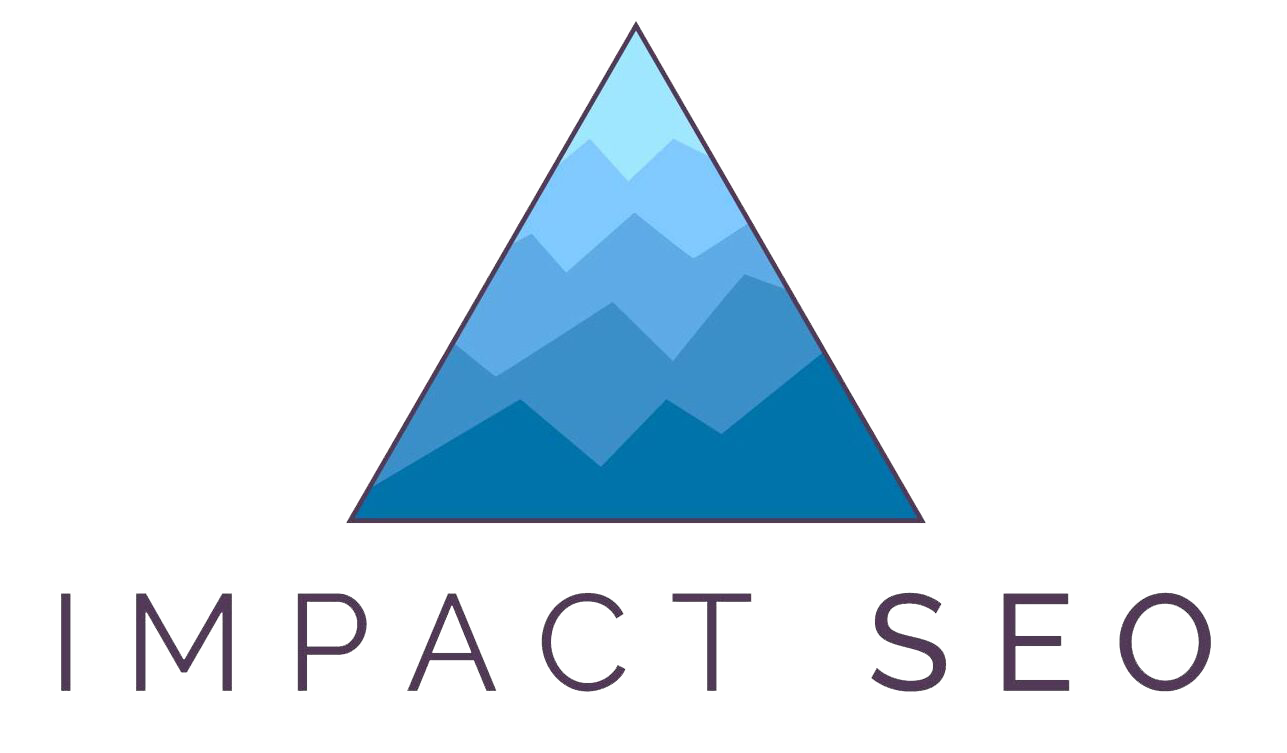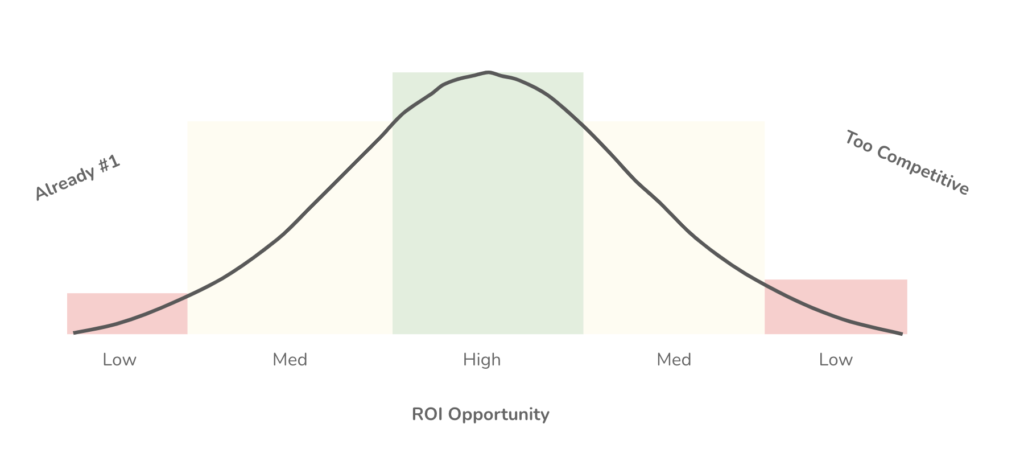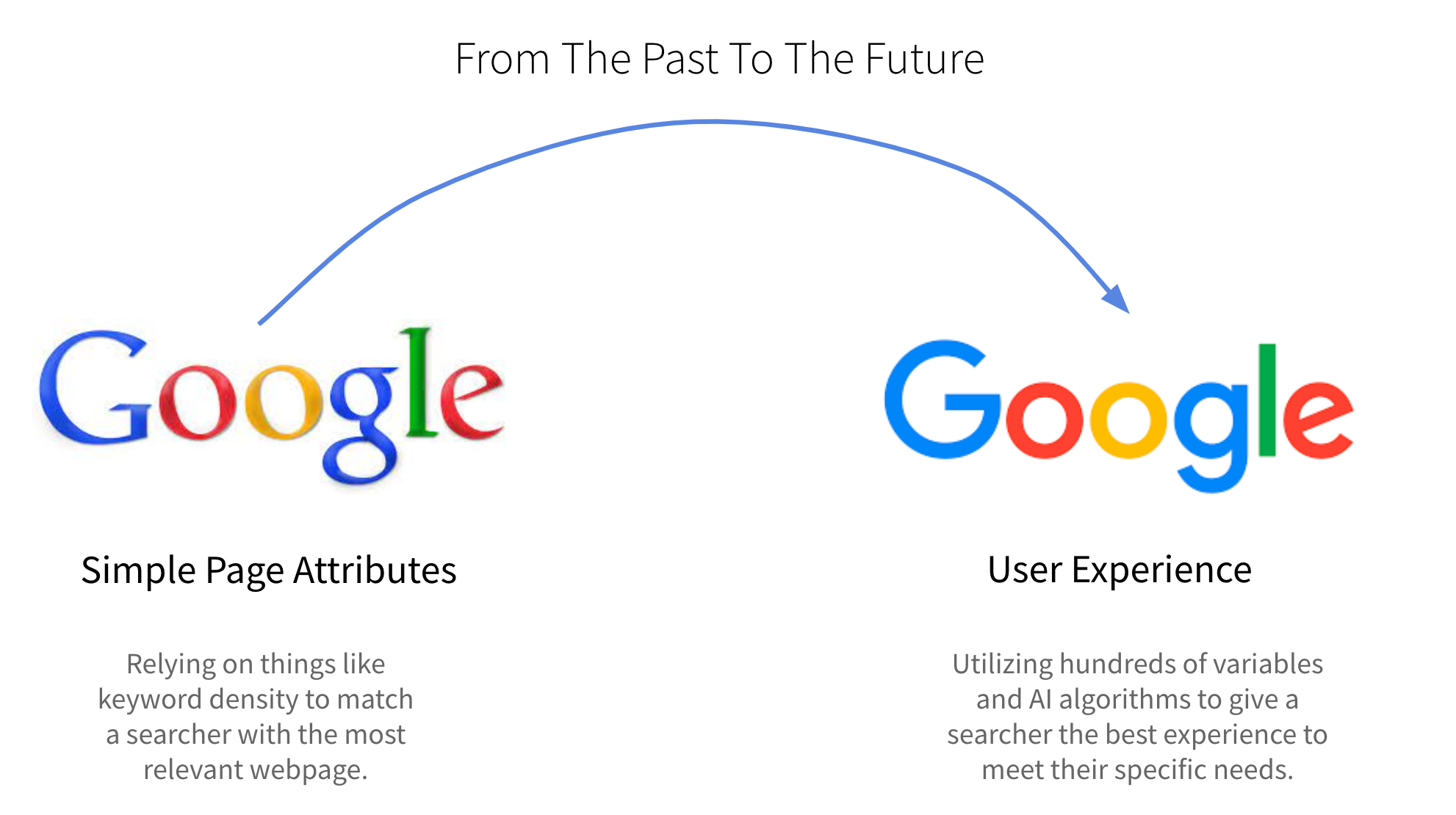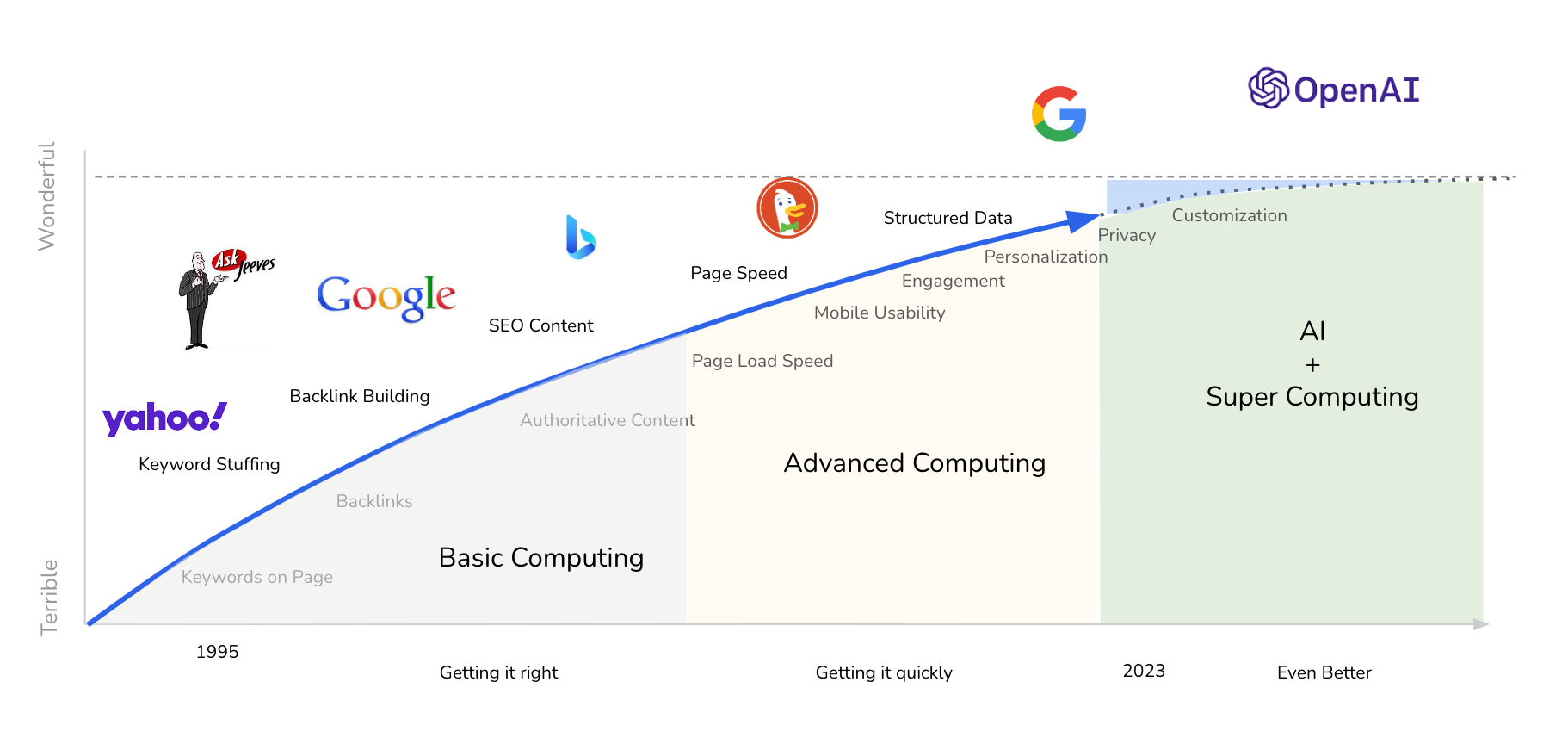Finding unicorns and filtering out duds.
SEO is a bit like being a venture capitalist. You have a fund (our SEO budget) and you want to get the highest ROI possible (traffic, leads, sales). We can only make a limited number of “bets” with your budget so we have to choose carefully how we allocate our dollars.
Clearly, if we spend all our money on keywords that already rank #1, we won’t get much return (if any). On the other side of the spectrum, if we spend our money on keywords that don’t yet rank but are so competitive we don’t stand a chance… no return.
How do we find the balance between these two? How can we identify those unicorn keyword opportunities and steer clear of the duds?
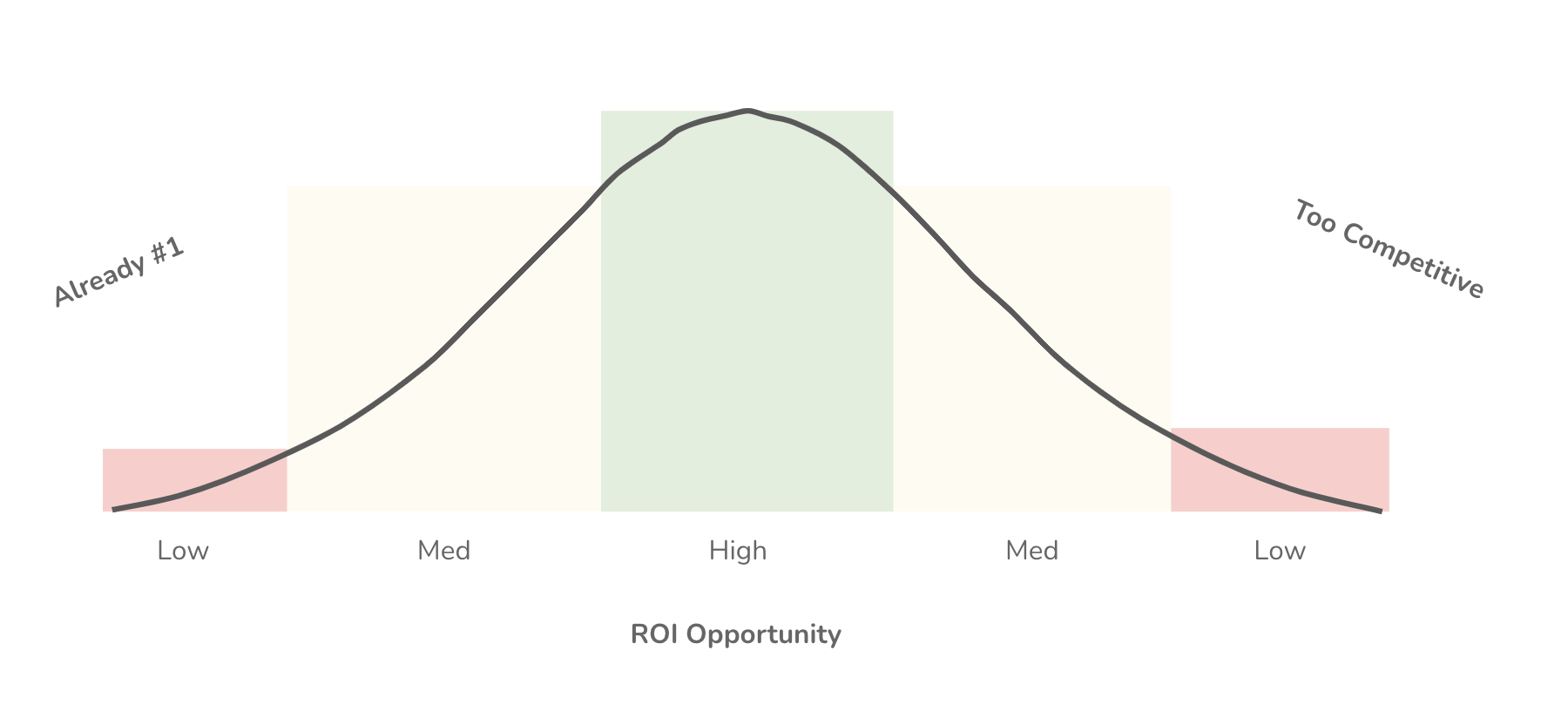
The High Opportunity area may be bigger or smaller for you depending on your niche and your current website authority.
We use a decision matrix that utilizes 4 key variables to get ourselves into the high opportunity zone:
- Current Rank
- Relevance
- Funnel Stage
- Competition
Here’s what you need to know to get each of these right.
Current Rank
Like startups that already have traction, keywords that already rank well indicate high opportunity. That’s usually a good place to start, but isn’t a sure bet. We need to consider our other 3 key variables before making any decisions.
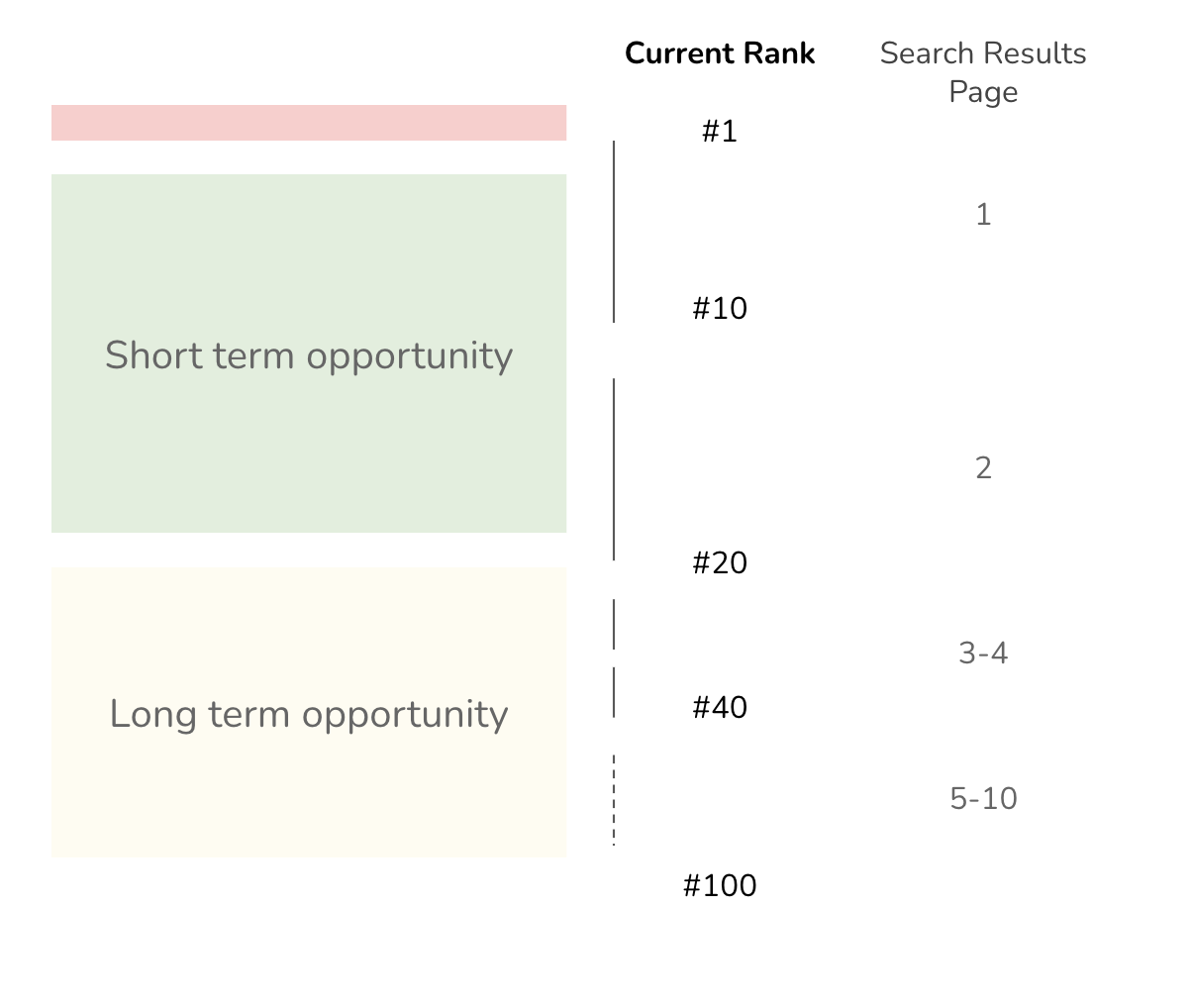
Here’s a rough guide to how our current rank will influence our resource allocation:
| Rank | General Assumption About Opportunity |
|
1-3 |
We’re at the top! If no direct competitors are above us, we should watch and defend this keyword. If there are competitors above us, this will likely be our top focus (assuming relevance is high). |
|
4-10 |
The top result is within shooting distance, but we need to evaluate competition carefully before getting too excited. |
| 11-39 | There’s a good chance we can optimize our way to the first page. |
|
40+ |
We probably need to create a new page or remake any existing page related to this topic. Our content isn’t relevant enough, or the competition is way too high (more on this in the competition section). |
Small Movements, Big Jumps
- Moving to #1 from #3
- Moving into the top 3
- Moving on to the first page
Because clicks are so concentrated on the first page of results and the first 2 results in particular, moving up into either of these spaces can have a dramatic impact on traffic.
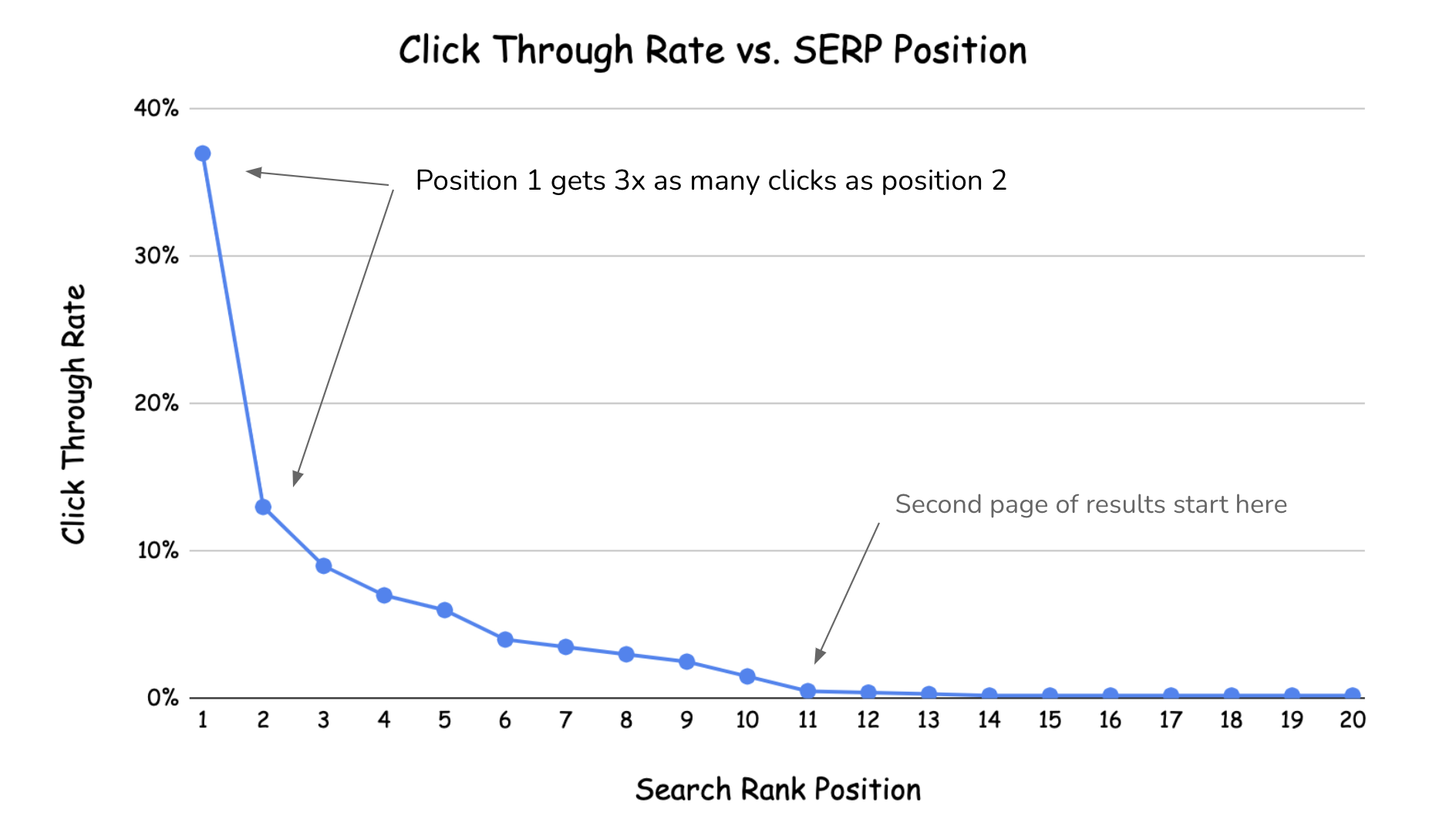
Visibility increases dramatically on the first page of search results, so a keyword that can be moved to the first page with a little bit of effort represents a big opportunity. We’ll have to evaluate competition before making an accurate judgment on how easy it will be to move our keywords.
These are just a few things we can surmise from keyword rank data alone. While this is helpful, we don’t want to make any strategic decisions until we can see the full picture for each keyword. Let’s take a look at relevance to fill in some more gaps.
Relevance
Rating the relevance of each keyword sounds easy but it isn’t. Amateur SEOs will do a binary relevance evaluation; a keyword is either relevant or it’s not. Rating keywords on a scale of 1-10 instead takes a little longer but adds tremendous value.
The key to nailing relevance is understanding search intention. If you can surmise the intent behind a search query (aka keyword), you can nail the relevance. The more accurate our relevance, the closer we can get to accurately identifying high ROI keywords.
How To Rank by Relevance
We evaluate one keyword at a time. Imagine the keyword in question being searched 10 different times by 10 different people. How many of those 10 different people would be happy to land on your site?

If all of them would, then that suggests this keyword is only searched by your target audience and therefore it is the most relevant, 10/10. This is usually the case with very specific keywords that represent your service or a question closely related to the service you provide. An obvious example would be a branded search term.
There will be many cases, however, where you have broader terms that may represent many different people using the same search query to search for different things. For example, think about the keyword “sustainable fashion”. This could represent various types of searchers:
- Someone looking to buy clothes
- A college student researching a paper
- An aspiring designer looking for ideas
On the other hand, a more specific search like “ethically sourced handmade scarves” is much more likely to only be someone interested in buying scarves with a specific set of attributes.
Taking the time to correctly identify keyword relevance in this stage may feel cumbersome, but as we’ll see when we build our sustainable strategy, it saves us at least 3x the time in future activities.
Funnel Stage
Adding funnel stage for each keyword helps us visualize how likely and/or how quickly ranking for that search term will result in growth. Theoretically, action-oriented keywords are most valuable to us because they represent someone ready to buy. Of course, SEO plays a bigger role in your full marketing funnel. But let’s keep things simple for now for the sake of prioritizing our keywords. (We’ll come back to maximizing ROI from SEO by supporting other channels later)
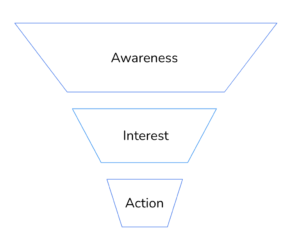
Using a simplified AIA marketing funnel will suffice for our keyword prioritization. Here are the 3 options I use:
- Action – the person searching this keyword has the intention of buying
- Interest – the person searching this keyword knows about this particular solution already and is learning more before they make a decision to buy
- Awareness – the person searching needs more clarification on their problem and/or what solutions exist to help them solve that problem
At this stage we’ve likely identified several seemingly high opportunity keywords. They are relevant, action-oriented, and we’re already ranking on the first two pages for them… BUT whether or not we can increase our ranking for those keywords depends on the competition.
Competition
Get out your binoculars and buckle up… we’re looking for unicorns today!
There are many ways to evaluate keyword competition and many tools that may or may-not be helpful. For the less disciplined and inexperienced this unicorn hunt can turn into a death spiral sucking up your time and ending in frustration. I’m going to lay out a simple approach that will get you the results you need without sending you down a rabbit hole.
Here are a few points of advice I’ve boiled down after doing this for 10 years:
- Tools – some are helpful, some are misleading. Before relying on any tool you need to understand how it’s generating its recommendations so you can see when it’s breaking down and giving you bad info (which is quite often).
- Metrics – I’ve found that adding more and more metrics disproportionately adds time and confusion while adding less and less insight into competition. As we’ll see here, I recommend keeping it very simple, especially at first.
- Shortcuts – The value in this process is taking the time and exploring the details. If you’re willing to do this and your competitors aren’t, you’ll build a stronger strategy and come out on top. SEO shortcuts most often subtract as much value as they save time.
We’re going to keep this process simple now and will provide more details in future posts for those who really want to dig in. Taking the simple approach I outline here is enough to get you to about 80% accuracy of evaluating competition, which is more than enough to build a sustainable SEO strategy.
Evaluating Competition Keyword by Keyword
The Core Concept: For each keyword, look at the search results and gauge how good the existing resources are.
Here’s what to look for as you go through each page in the first 10 results:
- Depth of content – does it cover the topic thoroughly?
- Quality of content – is it a high quality resource or just a simple webpage?
- Authority of website – are you seeing big names covering the entire first page of results or the smaller competitors in your niche?
Then ask yourself if you can create a webpage that better serves the searcher.
Here’s what you may find:
- No – Definitely Can’t – All the resources on the first page are very high quality.
- Maybe – Might Be Able To – There is room for a new and improved resource to be valuable to someone searching this keyword.
- Yes – Definitely Can – I can create a webpage that will be significantly more valuable to the searcher of this keyword than anything that currently ranks on the first page.
The Bottom Line: If you think you can create a resource that is significantly better than the existing resources, it’s worth a try. Of course, you will also need to factor in how much effort will be required to create this new resource.
Here are some things that make for a good opportunity to provide a winning resource to your target audience:
- Up To Date – existing resources are outdated and an up-to-date resource would significantly benefit the searcher.
- Clearer – existing resources have good information but aren’t written well or generally don’t communicate the information clearly. If you can write better, integrate graphics, or use another media type like video to communicate ideas more clearly there’s an opportunity for you.
- Deeper or More Accurate – if you can correct inaccuracies or further clarify points of confusion, you’ll likely be able to add value to a searcher and Google will reward you for that.
- Easier – if a searcher currently needs to read 3 different articles to get an answer to their search query, you can create an all encompassing page that is their new one-stop-shop.
Note: As you’re going through each keyword, keep notes on what you’re seeing. I keep a page for each keyword that lists the competitors who are ranking and my notes on how I can create better content for my target audience. This will save you time when you start creating content.
What does a unicorn look like?
Put yourself in the shoes of your target audience and search one of your valuable keywords … if you go through the results on the first page and have a hard time finding what you’re looking for, you’re hot on the trail of a unicorn keyword.
Here’s what your prioritized keyword list may look like.

Using this matrix you can clearly see which keywords are important and where the biggest opportunities are. I like to prioritize them from 1-100+, but you may find it better to rank them high, med, low.
But Wait… There’s More Right?
If you’re thinking “this is all common sense” and maybe even “duh, everyone can do this” then you’re absolutely right. There isn’t anything groundbreaking in this process. There’s no secret sauce, no magical metric, and I have no tool to recommend that does it all for you.
The beauty of the process is that it is simple and it does work.
If you follow our core principles for sustainable SEO you can stop worrying about all the tips, tricks, tools, and guru advice, and start doing what will actually grow your business, which is: get to know what your target audience wants and needs, then get to work delivering it for them.
What will differentiate us from our competitors? In the future of SEO the biggest differentiators are creativity, attention to detail, and consistency. The days of getting a leg up on competitors by employing the latest SEO hack are behind us. Let your competitors spend their time on the latest tools and tricks while you quietly and consistently align your website with the needs of your target audience. They might get a few wins here and there, but you’ll come out way ahead in the long run.
Other Factors: Backlinks, Page Authority, Domain Authority… and More!
Employing the simple strategy outlined here will get us to 80% or more effectiveness in prioritizing our keywords so we know what to work on and when. Getting the remaining 20% requires much more technical knowledge to break down factors like Page Authority and Domain Authority.
I do integrate these factors in strategies for my clients to further refine competition. But I have a suite of tools and a full team to help me do it. If you don’t have these resources available to you, you should still feel confident in your strategy and focus on moving forward to optimizing and creating.
I will dig deeper into competition in future posts, so stay tuned for updates. If you have a specific question feel free to leave a comment below.
